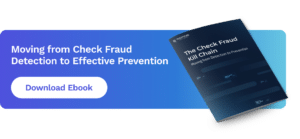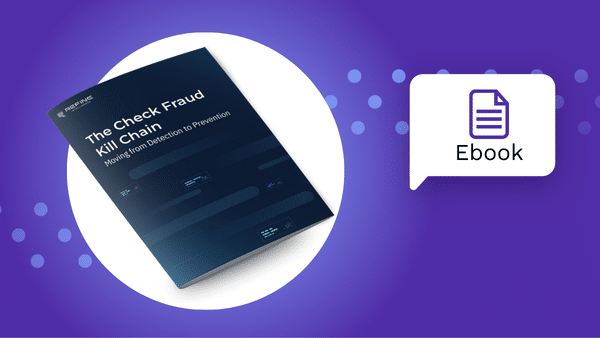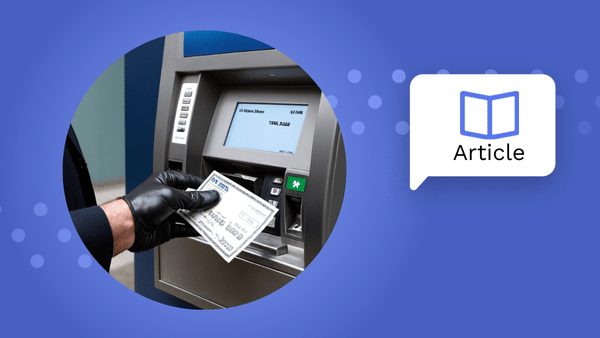
In an era of digital transformation, the surge in check fraud in the U.S still remains a puzzle for many, even though this type of fraud has menaced the industry for over 50 years. Despite the declining use of paper checks, the sophistication of check fraud is on the rise, putting tremendous pressure on fraud investigation teams at banks. Consequently, these teams struggle with an array of challenges that complicate their efforts to protect customer funds and the integrity of the bank’s checks. This blog post explores five key challenges faced by fraud teams at banks in this ongoing cat-mouse game with check fraudsters.
Limited Investigation Time for Check Fraud
One of the most pressing challenges for fraud prevention teams is the limited time available to review checks before they are cleared and funds are transferred. Typically, banks have a narrow window of 4-5 hours to manually examine suspicious checks. This time constraint is worsened by the volume of on-us (checks drawn on the same bank it’s being deposited to) and in-clearing checks processed daily, which can amount to hundreds or even thousands for larger institutions. The urgency of this task leaves little room for error and requires teams to be highly-efficient and accurate in their final decisions. The manual review process is very technical and labor-intensive, especially under tight deadlines. As a result, some fraudulent checks may slip through the cracks, leading to significant financial losses.
Internal Exploitation
Another challenge arises from the processing of on-us checks, which are deposited at the same bank. These checks often undergo fewer verification steps compared to those processed through external clearinghouses. This internal processing can create blindspots, as it may bypass certain fraud detection mechanisms. Fraudsters exploit this by targeting on-us checks, knowing they will encounter less scrutiny before the checks clear.
Real-Time Information Gaps
Fraud investigation teams often face real-time information gaps, particularly regarding the beneficiary and the authorization of the check by the account owner. Verifying the check in real-time is challenging due to the scarcity of data. Many times, teams must rely on limited information, making it difficult to confirm whether a check is genuine or fraudulent. These information gaps hurt the ability to make timely and accurate decisions, increasing the likelihood of fraudulent checks being processed.
High Fraud Costs and Operational Overhead
The economic implications of check fraud go far beyond direct customer losses. Banks are also exposed to regulatory fines, high operational overhead, and significant costs related to customer reimbursements. When fraud occurs, banks must compensate customers, which can result in substantial financial losses. Furthermore, additional resources required to investigate and resolve fraud cases contribute to a high operational overhead. This financial burden is also complicated by the potential reputational damage that can negatively impact customer trust and loyalty.
High False Positive Rate
The increasing sophistication of check fraud has made many existing detection tools obsolete, leading to a high rate of false positives. Fraud investigation teams often face an influx of alerts, many of which turn out to be “unproductive”. This high false alert rate can overwhelm teams, increase human error, and divert attention from genuine fraud cases.
Striking the Right Balance
The rise of check fraud in the U.S banking industry presents a complex set of challenges for fraud teams. These challenges create several imbalances and trade-offs between three factors: effective fraud prevention measures, cost-effective operations/workflows, and customer experience. Balancing these factors is a delicate endeavor that banks must achieve while combating the current surge in fraud – making it even more difficult.
Achieving this balance requires automated tools to enhance check fraud investigations while minimizing false positives and the operational overhead. Specifically, tools that include a set of capabilities to close the current gaps:
1. High-Velocity RFIs (Requests for Information): Real-time communications with the customer to collect critical contextual information about the suspected check.
2. Workflow Management: Effective 1st/2nd line workflow management to gain insights into their check investigation workflow, confirmed fraud vs. verified checks, and statistics related to customer RFIs.
3. Contextual Data: Unique data pertaining to the customer’s check history, beneficiaries, payments, associated entities and digital footprint data (geolocation, device and network parameters).
By continuously refining their investigation strategies and investing in digital tools, fraud teams can protect their checks and customer funds while striking the right balance between the factors mentioned above. In doing so, they can maintain the trust and confidence of their customer base, while effectively combating the current surge in check fraud in the U.S banking sector.
*****
To learn more about how Refine Intelligence fosters direct communications between risk teams, branches, and customers to fight fraud and financial crime, read about our Digital Customer Outreach solution.









